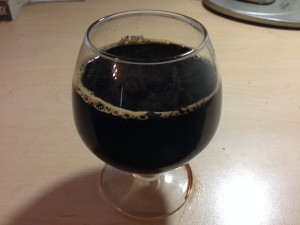This article has three sections preceding it. The first installment dealt with the concept of a brut IPA, the grist, and the mash. The second installment discussed the enzyme used to make a highly fermentable wort, amyloglucosidase. The third installment discussed hopping and the boil.
 Once you have boiled the wort and cooled it, it is time for fermentation. Brut IPA is a pale ale to IPA-strength ale, so the fermentation should not present an enormous challenge. All the usual advice — pitch an adequate amount of yeast, aerate well, and hold your fermentation temperature steady — should be heeded. However, there are two additional considerations — attenuation and yeast nutrition. [Read more…]
Once you have boiled the wort and cooled it, it is time for fermentation. Brut IPA is a pale ale to IPA-strength ale, so the fermentation should not present an enormous challenge. All the usual advice — pitch an adequate amount of yeast, aerate well, and hold your fermentation temperature steady — should be heeded. However, there are two additional considerations — attenuation and yeast nutrition. [Read more…]




Recent Comments